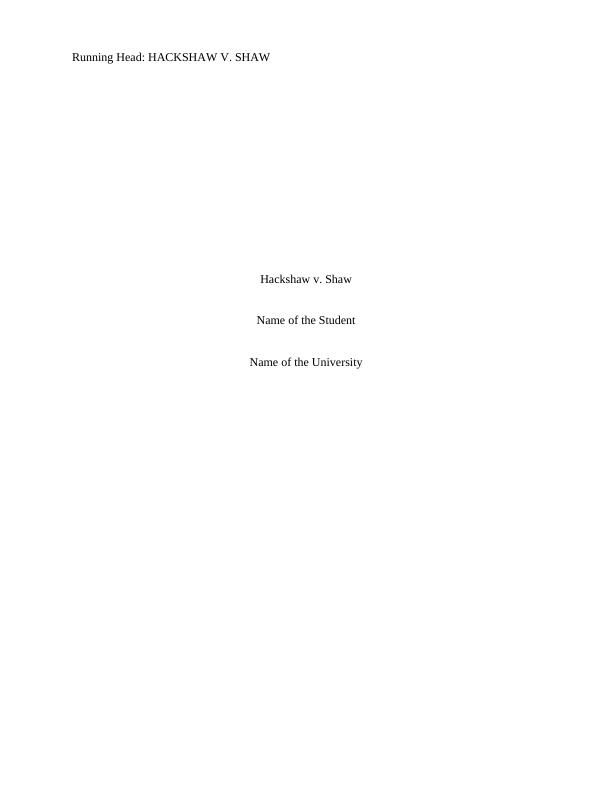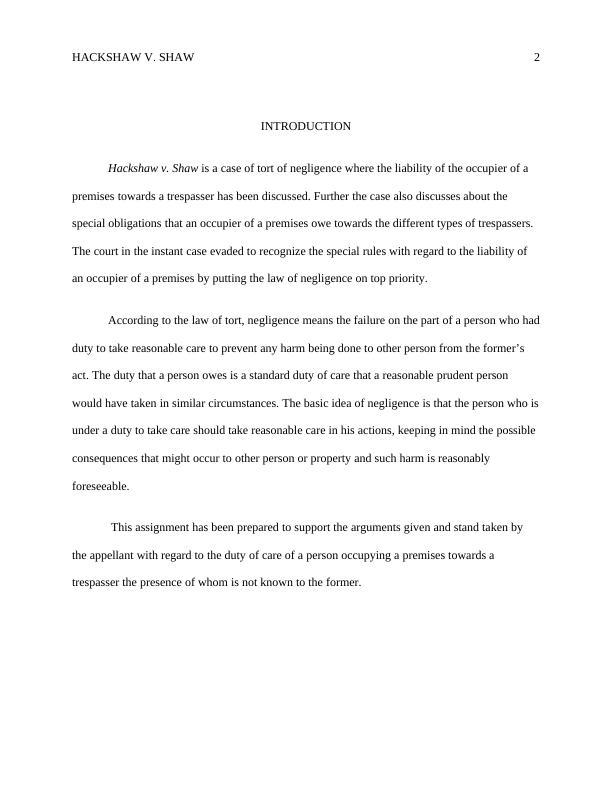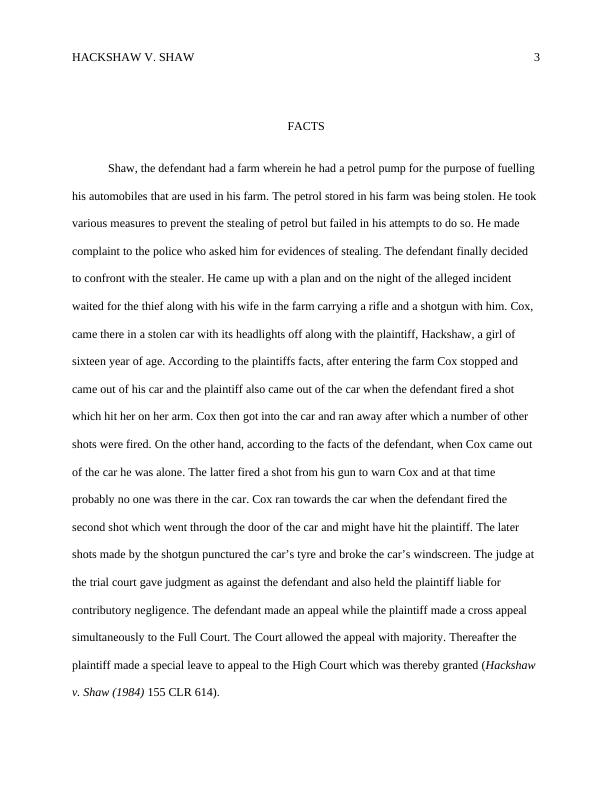Hackshaw V. Shaw | Case Of Tort Liability Negligence - Desklib
12 Pages2469 Words66 Views
Added on 2020-02-19
Hackshaw V. Shaw | Case Of Tort Liability Negligence - Desklib
Added on 2020-02-19
ShareRelated Documents
End of preview
Want to access all the pages? Upload your documents or become a member.
HA2022 - Business Law - Assignment
|9
|2586
|171
Hackshaw V. Shaw Law Case Study
|8
|2433
|632
BLAW204 - Business Law - Study Of Torts
|10
|2605
|40
Civil Law
|5
|1152
|319
Adeels Palace v Moubarak (2009)
|5
|1395
|277
Understanding Negligence and Pure Economic Loss in Enterprise Law
|8
|1818
|493




